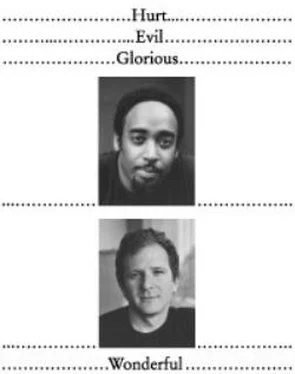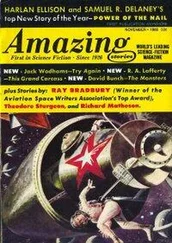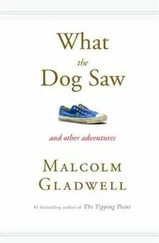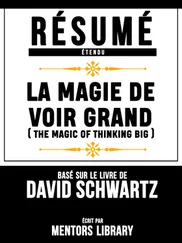Malcolm Gladwell - Blink - The Power of Thinking Without Thinking
Здесь есть возможность читать онлайн «Malcolm Gladwell - Blink - The Power of Thinking Without Thinking» весь текст электронной книги совершенно бесплатно (целиком полную версию без сокращений). В некоторых случаях можно слушать аудио, скачать через торрент в формате fb2 и присутствует краткое содержание. Жанр: Культурология, Психология, на английском языке. Описание произведения, (предисловие) а так же отзывы посетителей доступны на портале библиотеки ЛибКат.
- Название:Blink: The Power of Thinking Without Thinking
- Автор:
- Жанр:
- Год:неизвестен
- ISBN:нет данных
- Рейтинг книги:3 / 5. Голосов: 1
-
Избранное:Добавить в избранное
- Отзывы:
-
Ваша оценка:
- 60
- 1
- 2
- 3
- 4
- 5
Blink: The Power of Thinking Without Thinking: краткое содержание, описание и аннотация
Предлагаем к чтению аннотацию, описание, краткое содержание или предисловие (зависит от того, что написал сам автор книги «Blink: The Power of Thinking Without Thinking»). Если вы не нашли необходимую информацию о книге — напишите в комментариях, мы постараемся отыскать её.
Blink: The Power of Thinking Without Thinking — читать онлайн бесплатно полную книгу (весь текст) целиком
Ниже представлен текст книги, разбитый по страницам. Система сохранения места последней прочитанной страницы, позволяет с удобством читать онлайн бесплатно книгу «Blink: The Power of Thinking Without Thinking», без необходимости каждый раз заново искать на чём Вы остановились. Поставьте закладку, и сможете в любой момент перейти на страницу, на которой закончили чтение.
Интервал:
Закладка:
Boss stopped the car and backed up until the Taurus was right in front of 1157 Wheeler. Diallo was still there, which Carroll would later say “amazed” him. “I’m like, all right, definitely something is going on here.” Carroll and McMellon got out of the car. “Police,” McMellon called out, holding up his badge. “Can we have a word?” Diallo didn’t answer. Later, it emerged that Diallo had a stutter, so he may well have tried to say something but simply couldn’t. What’s more, his English wasn’t perfect, and it was rumored as well that someone he knew had recently been robbed by a group of armed men, so he must have been terrified: here he was, outside in a bad neighborhood after midnight with two very large men in baseball caps, their chests inflated by their bulletproof vests, striding toward him. Diallo paused and then ran into the vestibule. Carroll and McMellon gave chase. Diallo reached the inside door and grabbed the doorknob with his left hand while, as the officers would later testify, turning his body sideways and “digging” into his pocket with his other hand. “Show me your hands!” Carroll called out. McMellon was yelling, too: “Get your hands out of your pockets. Don’t make me fucking kill you!” But Diallo was growing more and more agitated, and Carroll was starting to get nervous, too, because it seemed to him that the reason Diallo was turning his body sideways was that he wanted to hide whatever he was doing with his right hand.
“We were probably at the top steps of the vestibule, trying to get to him before he got through that door,” Carroll remembered. “The individual turned, looked at us. His hand was on—still on the doorknob. And he starts removing a black object from his right side. And as he pulled the object, all I could see was a top—it looked like the slide of a black gun. My prior experience and training, my prior arrests, dictated to me that this person was pulling a gun.”
Carroll yelled out, “Gun! He’s got a gun!”
Diallo didn’t stop. He continued pulling on something in his pocket, and now he began to raise the black object in the direction of the officers. Carroll opened fire. McMellon instinctively jumped backward off the step and landed on his backside, firing as he flew through the air. As his bullets ricocheted around the vestibule, Carroll assumed that they came from Diallo’s gun, and when he saw McMellon flying backward, he assumed that McMellon had been shot by Diallo, so he kept shooting, aiming, as police are taught to do, for “center mass.” There were pieces of cement and splinters of wood flying in every direction, and the air was electric with the flash of gun muzzles and the sparks from the bullets.
Boss and Murphy were now out of the car as well, running toward the building. “I saw Ed McMellon,” Boss would later testify, when the four officers were brought to trial on charges of first-degree manslaughter and second-degree murder. “He was on the left side of the vestibule and just came flying off that step all the way down. And at the same time, Sean Carroll is on the right-hand side, and he is coming down the stairs. It was frantic. He was running down the stairs, and it was just—it was intense. He was just doing whatever he could to retreat off those stairs. And Ed was on the ground. Shots are still going off. I’m running. I’m moving. And Ed was shot. That’s all I could see. Ed was firing his weapon. Sean was firing his weapon into the vestibule. . . . And then I see Mr. Diallo. He is in the rear of the vestibule, in the back, towards the back wall, where that inner door is. He is a little bit off to the side of that door and he is crouched. He is crouched and he has his hand out and I see a gun. And I said, ‘My God, I’m going to die.’ I fired my weapon. I fired it as I was pushing myself backward and then I jumped off to the left. I was out of the line of fire. . . . His knees were bent. His back was straight up. And what it looked like was somebody trying to make a smaller target. It looked like a combat stance, the same one that I was taught in the police academy.”
At that point, the attorney questioning Boss interrupted: “And how was his hand?”
“It was out.”
“Straight out?”
“Straight out.”
“And in his hand you saw an object. Is that correct?”
“Yeah, I thought I saw a gun in his hand. . . . What I seen was an entire weapon. A square weapon in his hand. It looked to me at that split second, after all the gunshots around me and the gun smoke and Ed McMellon down, that he was holding a gun and that he had just shot Ed and that I was next.”
Carroll and McMellon fired sixteen shots each: an entire clip. Boss fired five shots. Murphy fired four shots. There was silence. Guns drawn, they climbed the stairs and approached Diallo. “I seen his right hand,” Boss said later. “It was out from his body. His palm was open. And where there should have been a gun, there was a wallet. . . . I said, ‘Where’s the fucking gun?’”
Boss ran up the street toward Westchester Avenue because he had lost track in the shouting and the shooting of where they were. Later, when the ambulances arrived, he was so distraught, he could not speak.
Carroll sat down on the steps, next to Diallo’s bullet-ridden body, and started to cry.
Perhaps the most common—and the most important—forms of rapid cognition are the judgments we make and the impressions we form of other people. Every waking minute that we are in the presence of someone, we come up with a constant stream of predictions and inferences about what that person is thinking and feeling. When someone says, “I love you,” we look into that person’s eyes to judge his or her sincerity. When we meet someone new, we often pick up on subtle signals, so that afterward, even though he or she may have talked in a normal and friendly manner, we may say, “I don’t think he liked me,” or “I don’t think she’s very happy.” We easily parse complex distinctions in facial expression. If you were to see me grinning, for example, with my eyes twinkling, you’d say I was amused. But if you were to see me nod and smile exaggeratedly, with the corners of my lips tightened, you would take it that I had been teased and was responding sarcastically. If I were to make eye contact with someone, give a small smile, and then look down and avert my gaze, you would think I was flirting. If I were to follow a remark with a quick smile and then nod or tilt my head sideways, you might conclude that I had just said something a little harsh and wanted to take the edge off it. You wouldn’t need to hear anything I was saying in order to reach these conclusions. They would just come to you, blink . If you were to approach a one-year-old child who sits playing on the floor and do something a little bit puzzling, such as cupping your hands over hers, the child would immediately look up into your eyes. Why? Because what you have done requires explanation, and the child knows that she can find an answer on your face. This practice of inferring the motivations and intentions of others is classic thin-slicing. It is picking up on subtle, fleeting cues in order to read someone’s mind—and there is almost no other impulse so basic and so automatic and at which, most of the time, we so effortlessly excel. In the early hours of February 4, 1999, however, the four officers cruising down Wheeler Avenue failed at this most fundamental task. They did not read Diallo’s mind.
First, Sean Carroll saw Diallo and said to the others in the car, “What’s that guy doing there?” The answer was that Diallo was getting some air. But Carroll sized him up and in that instant decided he looked suspicious. That was mistake number one. Then they backed the car up, and Diallo didn’t move. Carroll later said that “amazed” him: How brazen was this man, who didn’t run at the sight of the police? Diallo wasn’t brazen. He was curious. That was mistake number two. Then Carroll and Murphy stepped toward Diallo on the stoop and watched him turn slightly to the side, and make a movement for his pocket. In that split second, they decided he was dangerous. But he was not. He was terrified. That was mistake number three. Ordinarily, we have no difficulty at all distinguishing, in a blink, between someone who is suspicious and someone who is not, between someone brazen and someone curious, and, most easily of all, between someone terrified and someone dangerous; anyone who walks down a city street late at night makes those kinds of instantaneous calculations constantly. Yet, for some reason, that most basic human ability deserted those officers that night. Why?
Читать дальшеИнтервал:
Закладка:
Похожие книги на «Blink: The Power of Thinking Without Thinking»
Представляем Вашему вниманию похожие книги на «Blink: The Power of Thinking Without Thinking» списком для выбора. Мы отобрали схожую по названию и смыслу литературу в надежде предоставить читателям больше вариантов отыскать новые, интересные, ещё непрочитанные произведения.
Обсуждение, отзывы о книге «Blink: The Power of Thinking Without Thinking» и просто собственные мнения читателей. Оставьте ваши комментарии, напишите, что Вы думаете о произведении, его смысле или главных героях. Укажите что конкретно понравилось, а что нет, и почему Вы так считаете.












